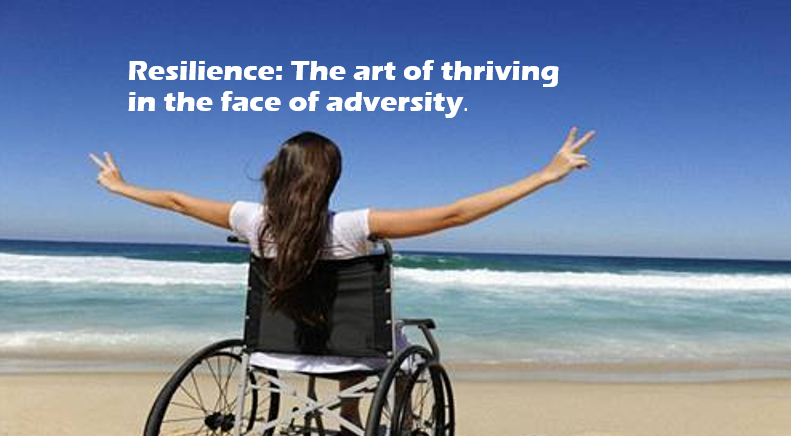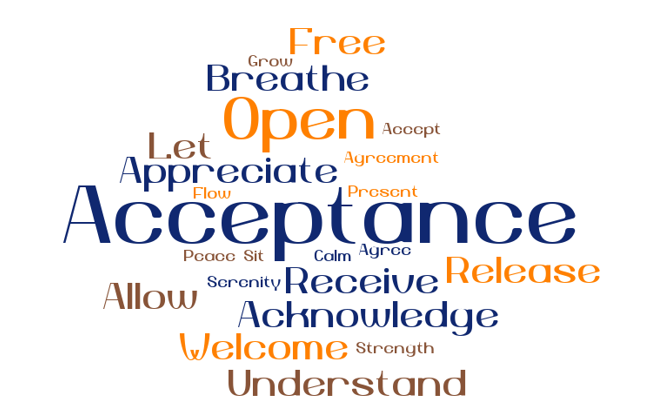Restoring Resilience and Long COVID Recovery
Are you surviving or thriving? This article discusses the resilience and strategies that people can use to get back to a place of thriving.
Updated January 7, 2025
Are you surviving or thriving?
This is an important question. Are you just getting through the day and spending time worrying, grieving, and looking back at what you have lost, or are you looking ahead to tomorrow and the gifts it will bring?
You have survived Long COVID, and life may look different now, but you can still thrive, no matter what challenges you are facing. You have the ability to adapt and move forward, and to take back your life. Make no mistake, change is never easy, especially when it involves loss and grief, but you can have a full and active life again.
Long COVID is confusing, and it is nearly impossible to predict what will happen next. This “new” condition has disrupted every aspect of our lives – family relationships, work, independence, friendships, and for some, it has even disrupted daily routines like self-care. Yet, in the midst of the chaos, some people are adjusting and adapting, and learning to live with the new realities. This is called resilience, the key to thriving.
Resilience
The capacity to withstand or to recover quickly from difficulties.
Resilience comes easily to some due to their nature. Others learned it in early childhood from their background filled with support and resources to overcome challenges. Others have built their own resilience through navigating difficult situations and learning to adapt quickly. Resilience can be learned at any time. No matter what your circumstances are, you are stronger than you know, and you can get through the challenges you are facing today.
Resilience is the ability to cope with and recover from setbacks. People who remain calm in the face of disaster have resilience.
According to Very Well Mind, resilient people face life's difficulties head-on. A resilient person has strong coping skills and is able to utilize resources, ask for help when needed, and use their skills and strengths to respond to life's challenges, instead of falling into despair or hiding from issues. People with resilience do not experience less distress, grief, or anxiety than other people, but they use coping strategies to handle difficulties in ways that allows them to grow, making them stronger than they were before.
Resilient people often have characteristics that help them navigate life's challenges.
A survivor mentality: When people are resilient, they view themselves as survivors. They know that when things are difficult, they can keep going until they make it through.
Effective emotional regulation: Resilience is marked by an ability to manage emotions in the face of stress. While resilient people still experience strong emotions such as anger, sadness, or fear, they recognize those feelings are temporary and can be managed until they pass.
Self-control: Resilient people tend to have a strong sense of self and recognize that their actions and responses can play a part in determining the outcome of events.
Problem-solving skills: When problems arise, resilient people look at the situation rationally and try to come up with solutions that will make a difference.
Self-compassion: Self-acceptance and self-compassion are traits resilient people have. They treat themselves with kindness, forgiveness and love.
Social support: A solid network of supportive people is another sign of resilience. Resilient people recognize the importance of support and knowing when they need to ask for help.
Radical Acceptance
Radical acceptance is a practice that involves accepting emotions, thoughts and circumstances that are unchangeable and out of your control. It is a skill that helps people to cope with difficult situations or intense emotions by saying YES to life, just as it is.
According to Psychology Today, radical acceptance is accepting what is not under your control and embracing what is happening now in a nonjudgmental way. When you wholeheartedly and radically accept emotional or physical pain, it can reduce stress and free up energy to move forward in your life and your recovery.
Radical acceptance is a practice that involves accepting emotions, thoughts and circumstances that are unchangeable and out of your control. It is a skill that helps people to cope with difficult situations or intense emotions by saying YES to life, just as it is.
According to Psychology Today, radical acceptance is accepting what is not under your control and embracing what is happening now in a nonjudgmental way. When you wholeheartedly and radically accept emotional or physical pain, it can reduce stress and free up energy to move forward in your life and your recovery.
Steps you can take to develop radical acceptance skills from Psychology Today:
1. Acknowledge the present. The most important part is to be mindful of your situation, paying attention to it in a non-judgmental way. However, this does not mean you should accept abusive or manipulative behavior; it just means accepting the reality, whether you like it or not.
2. Ask yourself if you can control or change the situation. If you can’t control what happens, why are you getting angry? It can be painful to acknowledge that you’re not always in control, but it can also be freeing.
3. Let go of judgment. Practicing radical acceptance means letting go of judgment (self or otherwise) and experiencing things as they are. You can improve this mindfulness skill by practicing meditation and being present in the moment.
4. Let the past be in the past. Remind yourself that the past cannot be changed. The past, no matter if good or bad, happened.
5. Breathe. This may sound simple, but it can be extremely effective. Whenever you are fighting reality, your body may get tense in parts such as the shoulders, face, or stomach. So take deep breaths for a few moments and focus on them. When you practice watching your breath, you may ground yourself in the present moment and become more relaxed.
6. Be patient. Choose to practice radical acceptance daily and understand that it takes time to master it.
7. Practice. Practice accepting situations so that when bigger challenges come along, you’ll have already developed these skills.
Gratitude
This practice can break the negative feedback that is keeping your body stressed and slowing down your recovery.
Count your blessings and celebrate your successes, no matter how big or small. Take time every day to appreciate the people and things around you. Recognize your strengths, acknowledge the successes, and reflect on the barriers you have overcome. Your definition of success will likely be different than the success of the next person, so don’t compare your progress to others. Measure your success compared to your own experiences yesterday, last month or last year.
This practice can break the negative feedback that is keeping your body stressed and slowing down your recovery.
Things you can do to help yourself
Minimizing physical & psychological stressors is essential in recovery from Long COVID.
Nutrition: Try to eat protein and fresh vitamin rich foods daily and avoid chemicals, preservatives, sugars, fast foods, prepared foods and high histamine foods.
Don’t skip meals. Your body needs protein, vitamin C, and vitamin D to heal from any injury or illness. A low histamine or low carbohydrate (sugar) diet is recommended by doctors treating Long COVID (PASC), and many people report a reduction in symptoms within 1-3 days of the diet change, including decreases in sneezing, itching or hives, irritable bowel syndrome, body pain, along with a reduction in swelling and inflammation.Hydration: A minimum of eight 8 oz glasses of plain water daily is recommended.
Avoid drinks with chemical additives. You can easily make a fresh electrolyte drink yourself by adding a dash of mineral rich Epsom salt and a piece a fruit like a raspberry for flavor instead of spending money on commercial drinks like Gatorade that contain chemicals and sit in plastic bottles for long periods of time. Remember that caffeine and alcohol have dehydrating effects.Sleep hygiene: Getting 7-9 hours of sleep so your body can repair itself.
You need at least 4 hours of uninterrupted sleep to get into the restorative phase of sleep.
Avoid stimulating activities after dinner like thrilling movies or books, arguments, negative news or frustrating stimuli.
If you wake up frequently or with a startle, you may be experiencing drops in your oxygen level, which signal your brain to release adrenaline to force you to take a breath. This could be a temporary inflammation issue or more enduring sleep apnea. Ask your doctor for a sleep study to evaluate your need for a CPAP or BiPAP, a machine that pushes air into your lungs when it senses an apneic episode (periods of not breathing).Stress management: Stress affects every component of your life.
The only thing you can control about stress is your reaction to it. Try to avoid or minimize your exposure to stressful situations: Turn off the news, make family visits that end unpleasantly short, wait for the morning to have intense discussions, let go of things that annoy you but don’t really matter in the big scheme of things, avoid intense conversations or entertainment in the evening.
Exercise within tolerance: Pace yourself and do not push your body to extremes in any way.
For some this may mean seated breathing exercises, walking to the mailbox. Rest when your body says to slow down. Gradually build on your activity endurance as your body cues you to progress. This can be hard to gauge, because when you feel good you naturally do more, but if you do too much you may experience symptom flare ups 1-3 days later as the post exertion inflammation builds. Some people describe this as post exertional malaise, others experience severe recovery setbacks.
Breathwork: You can literally stop the fight or flight reaction by taking slow deep breaths.
Deep slow breathing shuts down the adrenaline flow, slows your heart rate, lowers your blood pressure and decreases stress related histamine release. When you do this, your blood reroutes back to your brain and nervous system to allow you to think clearly. It also allows your body to use its energy and oxygen to heal your inflamed nerves and organs.
Long COVID Solutions
ProMedView Nurse Coaches - We get it.
Our clinical experts advocate for those with Long COVID.
Individual coaching
Group Q&A sessions
Peer support groups
Educational webinars
Keep moving, keep breathing.
COVID Care Group, LLC is not a healthcare provider and does not provide medical advice, diagnosis, or treatment.
Article resources
How to Practice Radical Acceptance | Psychology Today
Resilience: Meaning, Types, Causes, and How to Develop It (verywellmind.com)
Building your resilience (apa.org)
Original publication date: January 7, 2024






